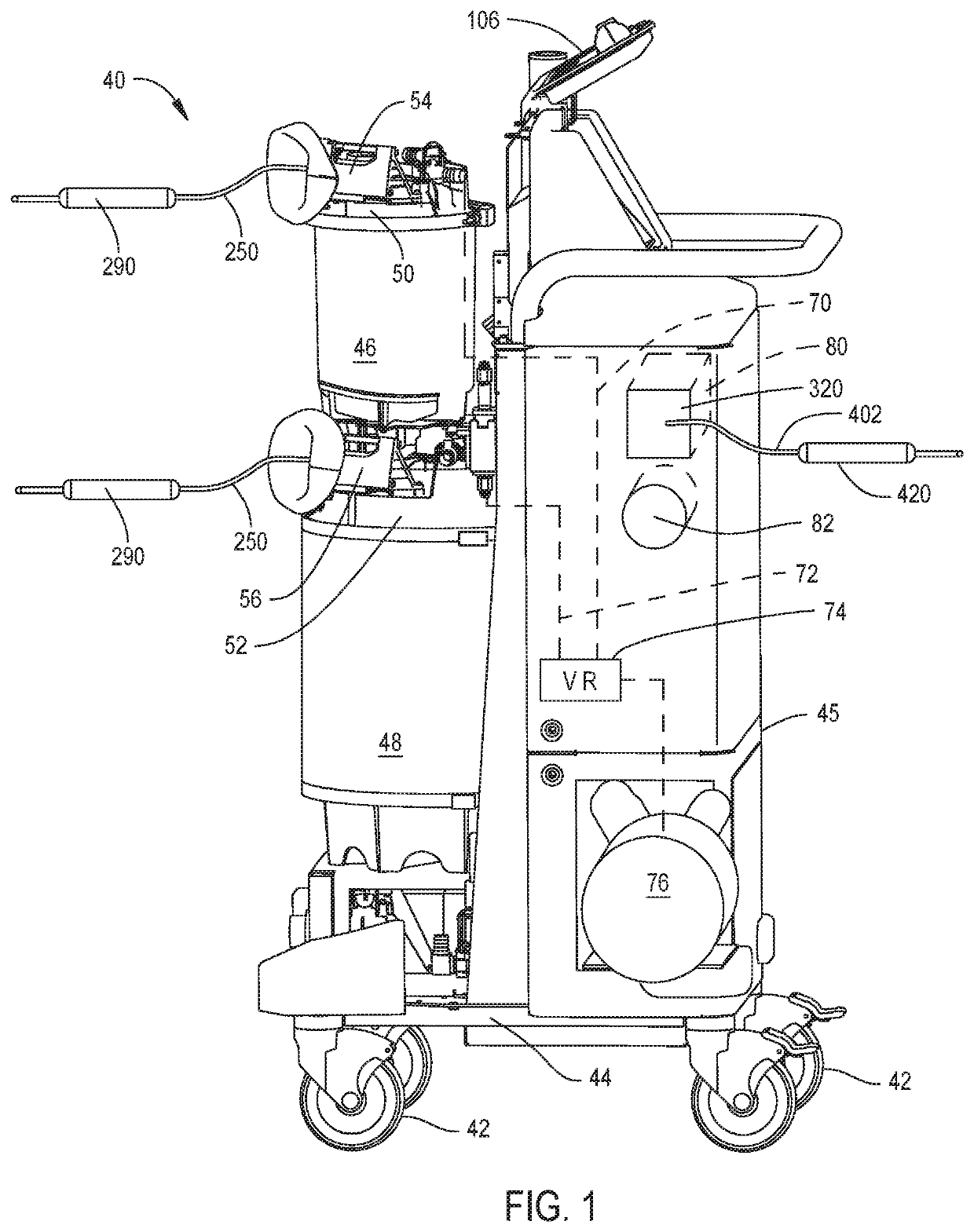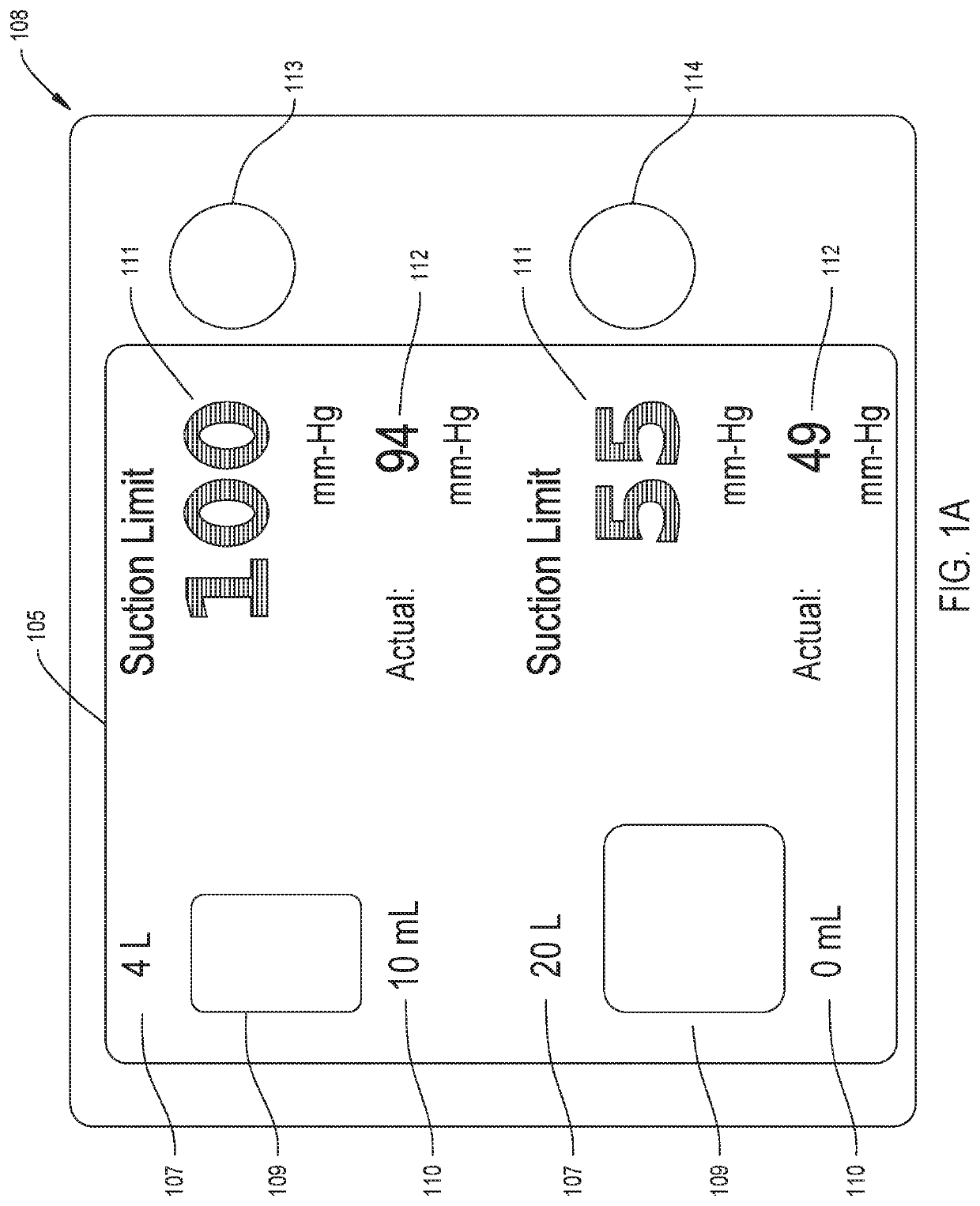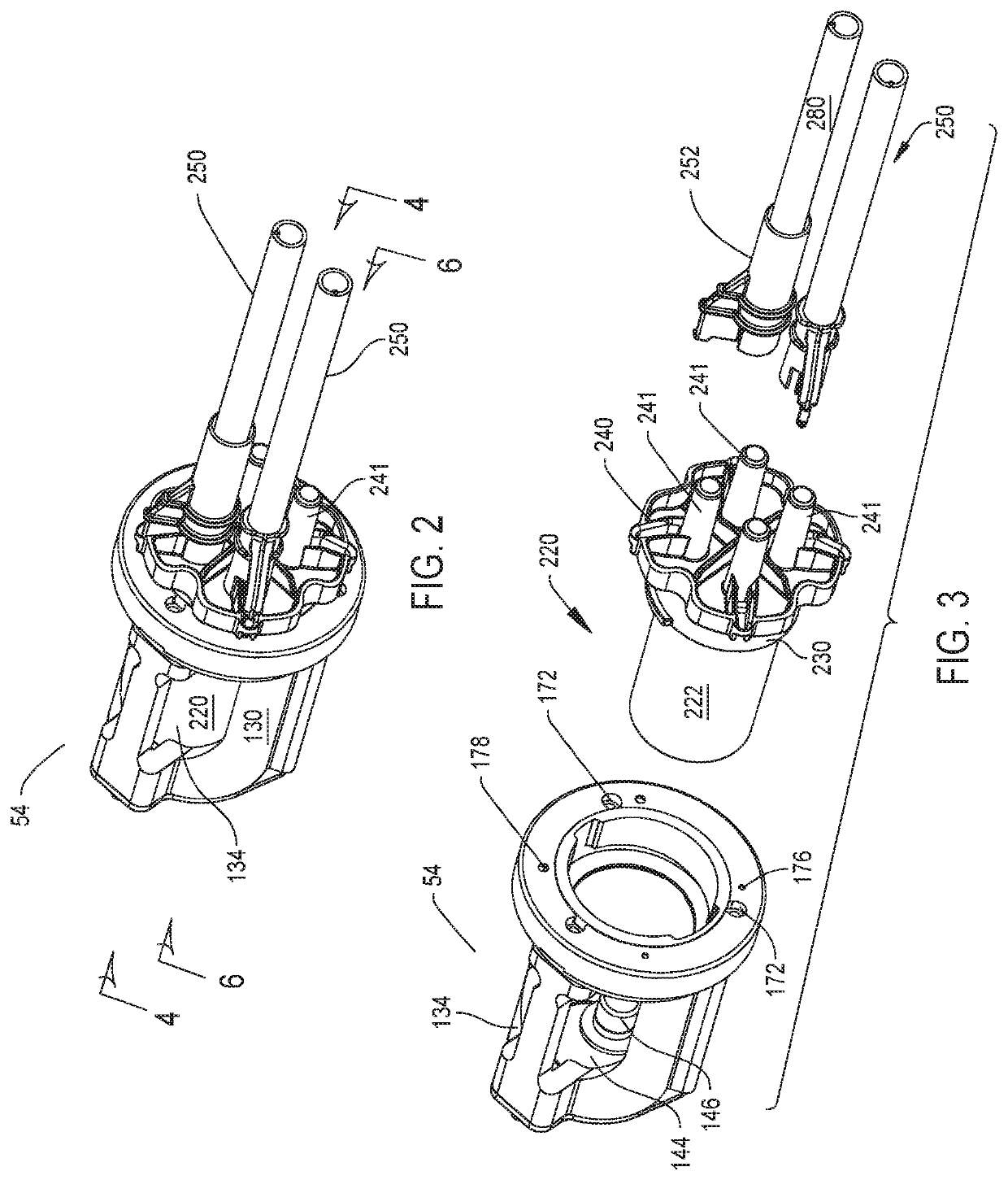Waste Collection Unit Including A Light Assembly
a waste collection and light assembly technology, applied in the field of medical and surgical waste collection systems, can solve the problems of clutter, reduced extent to which the suction tubing is present around the surgical personnel, and reduced the extent to which the operating room personnel is potentially exposed to the materials collected by the system
- Summary
- Abstract
- Description
- Claims
- Application Information
AI Technical Summary
Benefits of technology
Problems solved by technology
Method used
Image
Examples
Embodiment Construction
I. Waste Collection and Smoke Evacuation Unit
[0063]FIG. 1 illustrates a waste collection unit 40 constructed in accordance with this invention. The unit 40, sometimes referred to as a rover, includes a base 44. The cover and doors that normally conceal the components of the unit 40 are not present so that the interior components of the unit can be seen. Wheels 42, attached to the base 44, provide unit 40 with mobility. A chassis 45 extends upwardly from the base 44. The chassis 45 is the structural frame of unit 50 to which other components of the unit are mounted. Two canisters 46 and 48 are mounted to the base 44. Canister 46 is disposed over canister 48. Canister 46 has a relatively small interior volume, between 1 and 10 liters. Canister 48 typically has an interior volume larger than that of canister 46. In some versions of the invention canister 48 has a volume between 10 and 40 liters. Not illustrated and not part of the present invention is a valve located between the canist...
PUM
 Login to View More
Login to View More Abstract
Description
Claims
Application Information
 Login to View More
Login to View More - R&D
- Intellectual Property
- Life Sciences
- Materials
- Tech Scout
- Unparalleled Data Quality
- Higher Quality Content
- 60% Fewer Hallucinations
Browse by: Latest US Patents, China's latest patents, Technical Efficacy Thesaurus, Application Domain, Technology Topic, Popular Technical Reports.
© 2025 PatSnap. All rights reserved.Legal|Privacy policy|Modern Slavery Act Transparency Statement|Sitemap|About US| Contact US: help@patsnap.com



